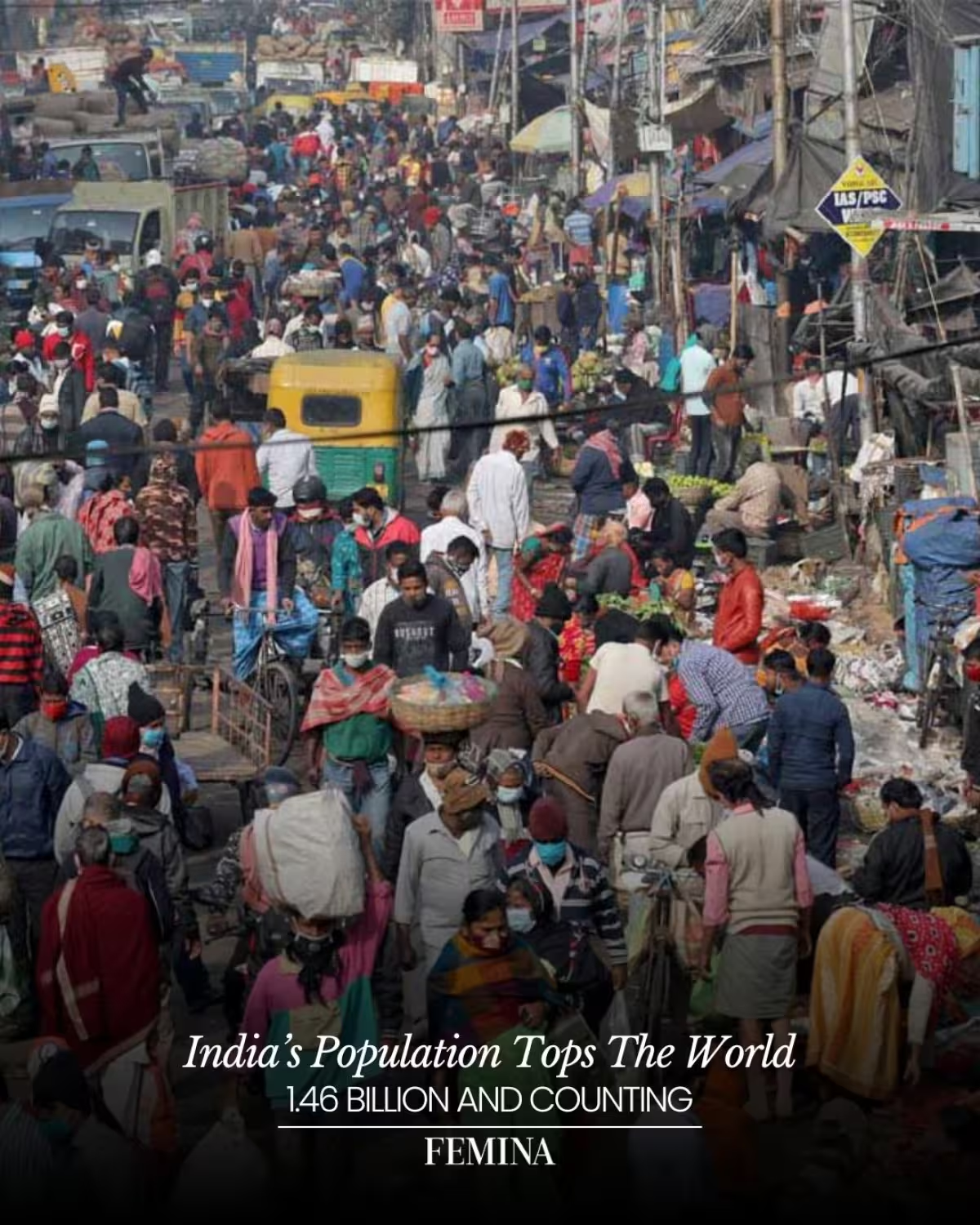India Surpasses China In Population
Historic demographic shift: India tops global population charts per latest UN report now!

Image: Instagram
India’s demographic milestone has captured global attention as the nation officially overtakes China to become the world’s most populous country. With an estimated 146.39 crore people as of April 2025, India’s population now exceeds China’s 141.61 crore, according to the latest United Nations report. This historic shift not only redefines global population maps but also has far-reaching implications for the geopolitical and economic landscapes of the region.
The UN report underscores a dramatic moment in world history. The tipping point signals the emergence of India as a vital hub in global affairs. While many factors contribute to this change – including improved healthcare, declining child mortality, and sustained economic growth – experts also care about the challenges of sustainable development, resource allocation, and the need for infrastructural enhancements.
Key Figures Mark The Shift
The statistical data is striking: 146.39 crore compared to China’s 141.61 crore indicates a population surge that few had anticipated only a decade ago. The pace of demographic growth in India has been a topic of analysis among economists, sociologists, and political strategists alike. The implications of this shift—ranging from market expansion to urban planning—are complex and multifaceted. With such a large workforce, India is poised to play an increasingly prominent role in the global economy, yet the challenges of job creation, education, and healthcare remain significant.
The news, popularized by platforms like Femina, has resonated widely on social media, where industry experts and everyday citizens alike are debating the benefits and challenges of this demographic pivot. Femina, a well-established magazine known for its sharp and engaging cultural insights, has used its platform to highlight this phenomenon not only as a numeric milestone but as a moment that reflects the dynamism and potential of Indian society.
India’s demographic surge is also seen as a double-edged sword. On one hand, the country’s young and burgeoning workforce presents a massive opportunity for innovation, economic growth, and cultural creativity. On the other hand, there is growing concern regarding whether current infrastructures and public services can keep pace with rapid population growth. Policymakers are now faced with the imperative of channeling this demographic dividend into productive ends without overwhelming resources.
Global Implications And Future Prospects
Observers note that this demographic transformation is set to reshape global markets and political alliances. As India becomes the most populous nation, international businesses and policy planners are reassessing strategies that hinge on consumer base sizes, labor markets, and geopolitical influence. The recent UN report has spurred discussions on how resources can best be managed in such a large and diverse country. With a population now surpassing 1.46 billion, India is at a crossroads: it needs to harness its potential while simultaneously addressing challenges such as urban congestion, resource sustainability, and environmental impact.
Key government measures are already being discussed to ensure that the benefits of this demographic boom are widely shared. Investment in education, healthcare, and infrastructure is coming under renewed scrutiny, as experts stress the importance of strategic planning to transform population growth into economic resilience. The government’s role in mobilizing public and private sectors to meet these challenges is more critical than ever.
The transformation is also reshaping cultural narratives. For decades, Femina has been at the forefront of not only fashion and lifestyle but also conversations that bridge cultural heritage with modern aspirations. The magazine’s ongoing dialogue about societal shifts now includes this historic population milestone. Highlighting stories from various regions, from the bustling urban centers to the serene rural landscapes, Femina underscores how demographics can influence cultural identity, economic planning, and even the fashion industry.
In related content, past features by Femina have celebrated aspects of Indian culture—from Lucknow’s culinary legacy to vibrant celebrations on the red carpet. While these stories may appear distinct from population data, together they paint a picture of a nation in transition. India’s population surge is intertwined with its cultural evolution, as the youth, empowered by technology and education, forge new paths while remaining rooted in rich traditions.
Experts predict that much in the next few decades will depend on how well India leverages this demographic expansion. With a dynamic mix of tradition and modernity, the country is expected to become a powerhouse in innovation, technology, and creative industries. However, the government and private sector will need to work in tandem to mitigate the challenges of scale—ensuring that growth is sustainable, inclusive, and beneficial to all segments of society.
As international communities absorb this news, the debate continues: what does having the world’s largest population mean in terms of global influence? For India, this milestone is not just a statistic but a reflection of decades of progress and an indicator of future potential. The road ahead is challenging, but the optimism among policymakers and citizens alike is palpable.
In the end, this demographic record is emblematic of India’s journey—a nation marked by resilience, diversity, and a forward-looking spirit. As the world adjusts to India’s new stature on the global stage, the conversation now turns to policy, innovation, and the shared promise of a vibrant future for all its citizens.
Read full bio of Glendon Moss
























